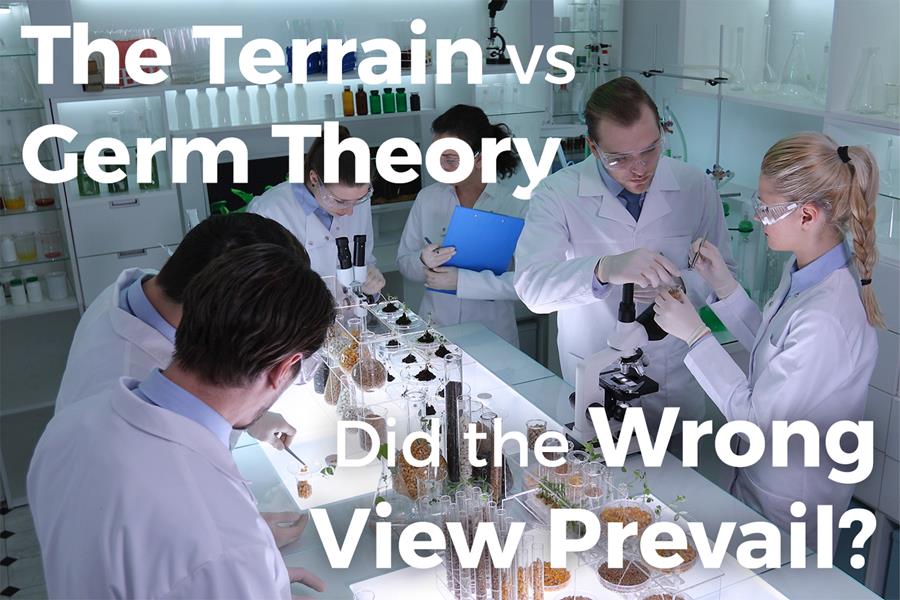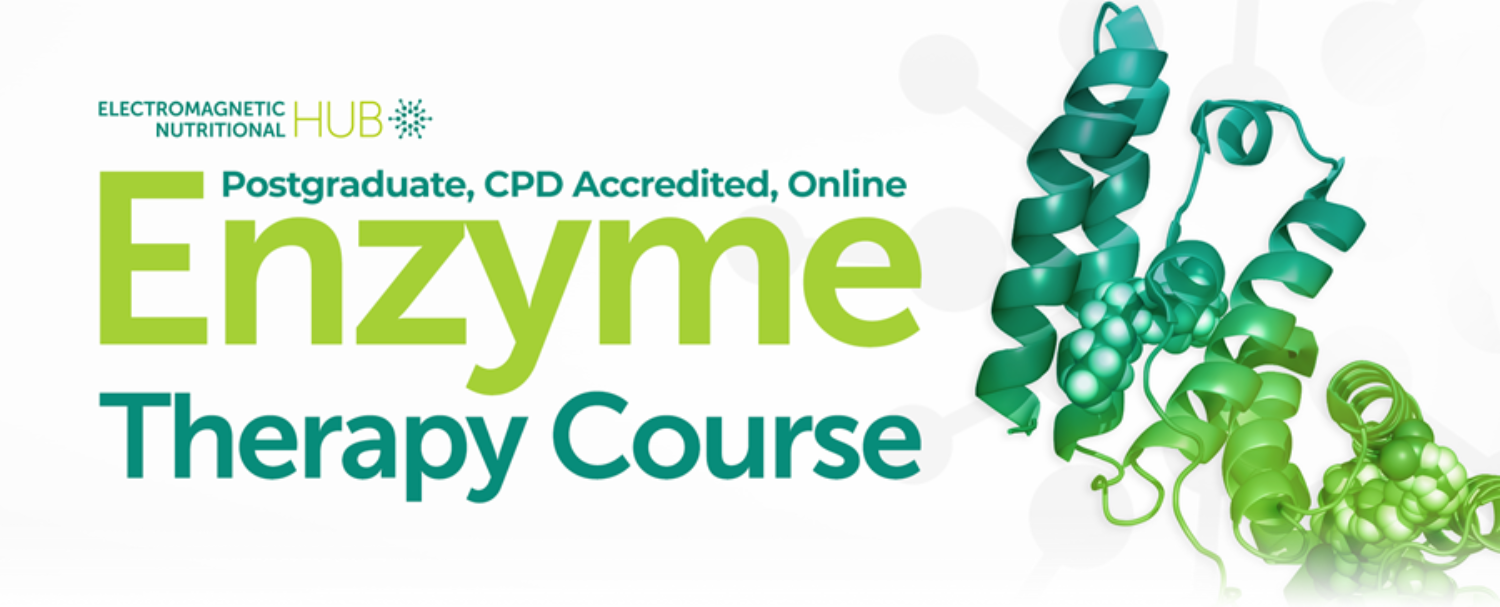Have you ever seen the film ‘Sliding Doors’? It is based on the concept that one simple decision can set off an interlocking chain of events. Then, a different choice changes a great deal of what happens next. This is very much what happened some years ago when two early scientists came up with two opposing theories about human illness. The version widely accepted – The Germ Theory – is now a core principle of Western medicine.

It is also ‘much-loved’ by pharmacy companies, who develop products based on its findings.
However, when you dig down on that, you find some truly sobering insights into the flawed and biased reasons why this theory was chosen to succeed. It also becomes clear that the largely forgotten and overlooked alternative theory has substantial merit and could alter our whole perspective of disease, and the way to treat common illnesses.
This article explores that ‘sliding doors’ moment and the way The Germ Theory entered medical thinking in a dubious manner. Then, we go on to explore the alternative theory that should receive a great deal more focus from mainstream medicine.
In other words, there are compelling reasons to believe that going in the ‘wrong direction’ all those years ago, has prevented many people from getting the correct treatment for disease. A view backed up by the fact global disease statistics are still appalling, despite the vast sums invested in ‘cures’ and germ control.
Who are the opposing scientists?
The identity of the two main figures behind these two different theories is highly significant in assessing why one became a core scientific principle and the other did not. Their names are Louis Pasteur (1822–1895) and Antoine Béchamp (1816–1908).
You will probably already know whose theory gained momentum, as Pasteur’s work is studied in school.
Both of these avid researchers were members of the French Academy of Science, and they were fierce rivals, including taking different directions in their emphasis (more on this later).
However, Pasteur had powerful allies, including no less than Emperor Napoleon III. It is believed that he was also willing to ‘steal’ and then tinker with research findings from other scientists, including those of his nemesis, Béchamp, to support his views.
Using an apparent ‘mish-mash’ of his own and plagiarised research, Pasteur formed ‘The Germ Theory’ as a principle. It was seized on as a clear way of explaining common illnesses, and his political allies celebrated Pasteur’s remarkable findings.
Meanwhile, the more complex – and some would argue carefully considered and valid – theories from Béchamp failed to gain public support.
Germ theory overview
We will look closely at Béchamp’s alternative findings and views later, but first a quick reminder of the Pasteur theory that now underpins modern Western medicine.
The view is that disease comes from pathogenic organisms that invade our body, especially bacteria. Different types of microorganisms create different illnesses and require different treatment protocols. Hence Pasteur is sometimes referred to as the “father of immunology”.
These infectious agents are passed around by different means too, impacting on disease prevention and containment. Hence why the measures taken to limit the spread of COVID-19 focused on a massive, global wave of ‘lockdowns’.
These organisms tend to be collectively referred to as germs, and a truly vast industry has sprung up to develop both preventative products, and ways to treat the invasion of germs within the human body.
Germ theory is why we amputate infected limbs, kill cancer with toxic chemotherapy medications and vaccinate children worldwide, as well as underpinning the massive output from Big Pharma.
That’s all clear so far. So, how could something that is so intrinsic to modern living be questionable, or potentially deeply flawed?
Béchamp’s Theory
Even setting aside the political and personal limitations Béchamp faced, it was clear his version of why people fall ill appeared far less plausible to his peers, and to society in general. It also offered less clear (and much less lucrative) treatment pathways.
In fact, his findings were branded as ‘heretic’, as he dug deep into how human life is formed and maintained.
Béchamp was the scientist who first referred to “microzymas”. This came from the Greek word for a ferment – zyme. He used this to reference the minute particles that are “primary anatomical elements of all living beings” according to Béchamp.
How these tiny living particles move and interact influences human health and wellbeing This then led to the view that we don’t ‘catch’ disease, we create common forms of ‘dis-ease’ from within.
Enlightened scientists now accept that these early observations into microparticles were a pioneering exploration of a now universally accepted biological unit. In other words, his fundamental finding was correct, and micro-organisms in the human body are indeed central to our health and wellbeing.
From this, the highly intelligent Béchamp concluded that humans are, “mini ecosystems”, a series of interwoven microorganisms that need to be constantly renewed and strengthened. If this ecosystem is negatively impacted by poor diet, toxic substances and other lifestyle factors – the microbes we rely on to maintain our health are disrupted.
This can be described as microorganisms within our body becoming pathogenic (disease creating organisms) when the host’s cellular “terrain” is incorrect. Hence this is sometimes referred to as Germ v Terrain Theory.
Interestingly, the invention of the Rife Universal Microscope in the late 1930s/early 1940s made it possible to observe how microorganisms formed from dead cells. This added to the view that germs don’t cause disease but are a secondary symptom of activity at a molecular level.
Should more investment and emphasis be focused on how we can improve our molecular vitality – our terrain – than on fighting germs that enter our body? Could disease come from within us, rather than from outside sources? These are vitally important questions that mainstream science must address.
Now, let’s look at the evidence to support that.
Evidence that Pasteur was wrong
One of the strongest arguments that Germ Theory is a warped concept to explain disease, is that the treatment pathways it triggers are not as effective as they should be. Decades of medical research and eye-watering amounts of money have gone in to ‘curing’ common diseases by killing micro-organisms that cause them. Yet the statistic on global disease keeps going upwards, despite the fact health standards, in general, have improved through education and outreach.
The Global Burden of Disease Study (GBD) has been conducted for over three decades and now involves 150 countries, and 8,000 scientists and analysts, producing over 1 billion data points. In 2020, it reported on the “perfect storm of rising chronic diseases and public health failures fuelling the COVID-19 pandemic”.
Of course, to a degree, this perfect storm is due to preventable risk factors, such as obesity, smoking, poor diet, high blood sugar, and exposure to air pollution as well as the effects of natural disasters, poverty, and social inequalities.
However, there is a body of opinion that this it is also due to an unwillingness to consider that Béchamp’s theory must be revisited in a robust and far-reaching manner.
This is especially true when you look at one of the most relevant points just referenced – that lifestyle, diet and access to proper nutrition are now universally accepted reasons for why humans continue to become ill. Do we eat enough of the right things to help us to combat and kill ‘germs’, or is the role nutrition plays in preventing dis-ease more subtle than many people appreciate?
Superbugs and losing ground to disease
Another important development that casts doubt on Germ Theory, and adds weight to calls to revisit Terrain Theory more robustly, is the rise of the Superbug.
There are serious human illnesses that are now impervious to even the most advanced antibiotics, antifungals and vaccines. The response has been to develop new, more advanced substances that kill pathogenic organisms, rather than revisit the root cause.
We also clean surfaces, the air and all the other places we believe germs ‘hide’ to try to stem their advance. Yet still, they come.
Then, there is a horrific cost of adverse reactions to different drug protocols to consider. According to one report, “admissions for adverse drug reactions over the one-month period amounted to more than £490,000” in one hospital alone. This represents a £2.21 billion annual cost for the NHS.
Keep in mind too, that some people exposed to COVID-19 didn’t become infected, and apparently healthy, and even immunised individuals, have died from it. Why is its mortality profile so hard to map, and could the answer be how each person’s ‘terrain’ is configured?
Also, if Germ Theory is so flawless and in the face of mass vaccination policies and procedures, why are unique diseases ‘popping up’ to replace the ones we have tackled?
It could be explained by looking out how poverty and race, and lifestyle factors such as poor diet, are compromising our ‘host terrain’ and whether internal pathogens are constantly evolving, while we look for external causes.
Germ Theory, our Terrain and gut health
There is another important consideration in evaluating Germ v Terrain theories. The widespread reliance on products to stimulate our production of antibodies - antibiotics, antifungals, and vaccines – may be taking a negative toll on humankind’s digestive health.
Our gut health is indescribably important. The work done by the 100 trillion microbial cells in our gut impacts our nutrition absorption, metabolism, immune function and biological energy production.
From birth onwards, microorganisms ‘educate’ and bolster our immune system. This is believed to be a vital component in our ability to withstand such things as autoimmune diseases and cancer.
Protecting our gut health through proper nutrition, is clearly a key factor in preventing disease, therefore.
Unfortunately, the vital microbiome in the human gut has been disrupted by the medications we take without a second thought. In other words, the ‘cures’ we use could be one of the reasons that digestion-related illnesses like diabetes and inflammatory bowel diseases – and other diseases like arthritis and allergies - are so shockingly common.
Electromagnetic Nutrition
There is a growing body of opinion that Germ Theory and a global emphasis on immunisation to prevent illness are distracting the medical community from what really matters. Instead, they should focus on the things you can do to make the human body’s mini-ecosystem healthy, strong and dis-ease resistant.
If your ‘terrain’ is correct, it limits the possibilities for pathogens to form in your body.
A healthy terrain is created by four things: electric/magnetic charge; acid/alkaline balance; levels of toxicity; and nutritional status. (And yes, external toxins can negatively impact on your terrain and its ability to resist disease formation.)
This is the core basis of electromagnetic nutrition. It involves boosting your body’s cellular health in a manner that supports how it uses electrical energy and communication.
If you stop to consider it, terrain theory is something that we consciously or unconsciously already connect to. We already know that nutrition, getting enough sleep, and avoiding toxins maintain our molecular health, and keep our intricate mini-ecosystem balanced.
So, it is not that big a ‘leap’ to accept that a failure to follow this route to good health could be triggering the internal production of pathogens and global dis-ease.
However, there is concern that putting more emphasis on electromagnetic nutrition and Béchamp’s Terrain theory, is going to be held back by one cold, hard fact. The trillions of pounds made from germ ‘cures’ and preventative substances can't be matched by switching the emphasis to promoting improved internal health and well-being.
Fortunately, you have naturopathic practitioners and our resources to help you, if you agree that the sliding door should have been in favour of Béchamp.




